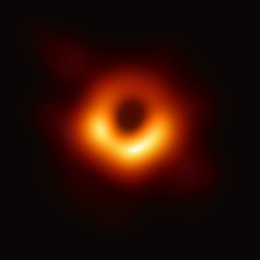A New Perspective on Black Holes: The Magnetosphere
by Kaden Oqueli-White ’22, Managing Editor

Scientists first received an observable proof of black holes in 2019, when the Event Horizon Telescope (EHT), a global network of observatories, compiled observations from 2017 into the first ever black hole image, specifically an image of the black hole within the heart of galaxy M87.
Since then, further observations have revealed even more concerning these cosmic behemoths. With more recent data collected, researchers have compiled another image of M87, one that captures the magnetic field of the black hole. By detecting the polarized light emitted by the incredibly hot gases circling the black hole, the Telescope has mapped both the shape of the magnetic fields and has more clearly defined the boundary of the event horizon itself, the barrier between where the physics of the black hole become dominant. These developments may lead to explanations regarding the behaviors of quasars, extremely luminous objects resulting from the jets of matter from supermassive black holes.
Monika Mościbrodzka, coordinator of the EHT Polarimetry Working Group and a professor at Radboud Universiteit in the Netherlands, believes that just a simple image of a black hole can provide scientists with “the next crucial piece of evidence to understand how magnetic fields behave around black holes, and how activity in this very compact region of space can drive powerful jets that extend far beyond the galaxy.” Even beyond the immediate implications of this research, the simple fact of this achievement marks the progress in the EHT itself, which those like Shepherd Doleman, founding director of the EHT, are hopeful in the future of the technology: “Even now we are designing a next-generation EHT that will allow us to make the first black hole movies. Stay tuned for true black hole cinema.”